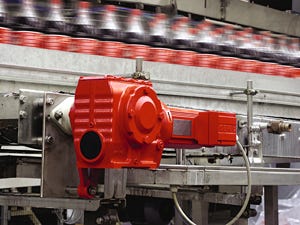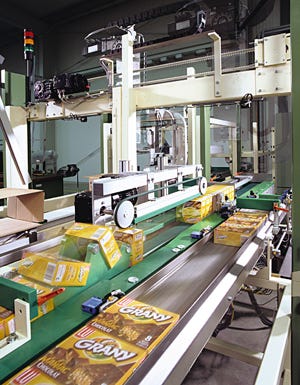Flexibility is increasingly important in packaging machinery
March 11, 2015
|
|
As machine builders look to their packaging customers for keys to future designs, the need to switch products without investing in new equipment and better machine diagnostics are becoming important trends. For most packaging machinery OEMs, there are two key issues: Low cost and high flexibility. Much depends on what the budget will allow, and how creative OEMs can be.
Geoff Clippinger, industry manager for the Food and Beverage Center of Competence for Siemens Energy & Automation Inc., says, “Packaging requirements are changing everyday, because companies are constantly releasing new products. They don't always need equipment that can handle a rapid changeover, but they doneed flexible machines that can accommodate new products.”
Ben Green, packaging industry consultant for the Motion Control Solutions group at Siemens, contends that OEMs today are striving to develop a “silver bullet:” A machine that lets users “switch from one product to another and not have to make a new capital investment every time packaging formats change.”
To achieve such capability, machine designers are addressing a number of considerations, including machine life cycles. Mike Wagner, Rockwell Automation's global business manager for packaging OEM solutions, says, “Today, we have vertical form/fill/seal machines that put potato chips in a bag of any size. Linear motors are used to drive the equipment; and the machine can be changed on-the-fly to run another bag size. You don't need another machine or even an upgrade every time you launch another product.”
Wagner says that by designing this kind of flexibility into machines, OEMs are achieving an internal cost savings. “If they can build a machine that's more flexible, they don't have to redesign it so frequently—and that is related to sustainability and lower cost,” he adds.
|
|
OEMs also are looking at designing equipment with new ways to maintain it and to keep it running at full efficiency, says Wagner. Beyond taking the obvious steps to control losses such as air leaks, he says, “they are making sure that when a bearing goes bad, it can be easily identified and replaced. They are building onboard vibration analysis tools to measure component performance.”
Many systems already have these features and capabilities, adds Doug Burns, practice lead for sustainable production at Rockwell Automation.
Predictive maintenance, online parts ordering, energy monitoring systems—these information metrics used to reside only at the plant level. But they are moving to the operator level or machine level.
Doug Burns, practice lead for sustainable production at Rockwell Automation says that packaging machines already include controllers that can, for example, help optimize temperature loops and setpoints to minimize the energy needed for shrink wrapping. It's one of several things in existing controller platforms that many machine builders and end users can—but typically haven't yet—tapped into to drive efficiency.
Merging package and machine
The big trend, adds Wagner, is to bring the package and the machine together. “Predictive maintenance, online parts ordering, energy monitoring systems—these information metrics used to reside only at the plant level. But they're moving to the operator level or the machine level. When that occurs, we are likely to see some revolutionary things happening.”
These things could include better machine diagnostics that improve information about what is happening and what might go wrong, and other ways to maintain productivity.
For example, “a lot of electronic equipment contains memory cards now,” explains Siemens' Clippinger. “If a part fails, you just pull the memory card out of the bad part, put it into the new part, put it back in place, and the machine is up and running again in five minutes. That can reduce downtime and maintain productivity.”
The fact is, downtime costs money. And some contend that anything that reduces downtime costs is the real silver bullet for packaging machine makers and their customers, especially given the current world economy.
“I'm not yet seeing these economic times drive [an increased interest in] efficiency,” says Rich Mintz, product manager for SEW Eurodrive, a supplier of motion-control products to packaging OEMs. “Price is still the driver,” Mintz says. “OEMs are still faced with keeping the costs of their machines as low as possible.”
Mintz suggests machine buyers do a cost audit before specifying the next purchase. “Packagers should sit down with the OEM, review each component, and re-evaluate the most costly ones,” he says.
More information is available: |
Rockwell Automation Inc., 414/382-2000. www.rockwellautomation.com. |
SEW Eurodrive Inc., 864/439-8792. www.seweurodrive.com. |
About the Author(s)
You May Also Like




